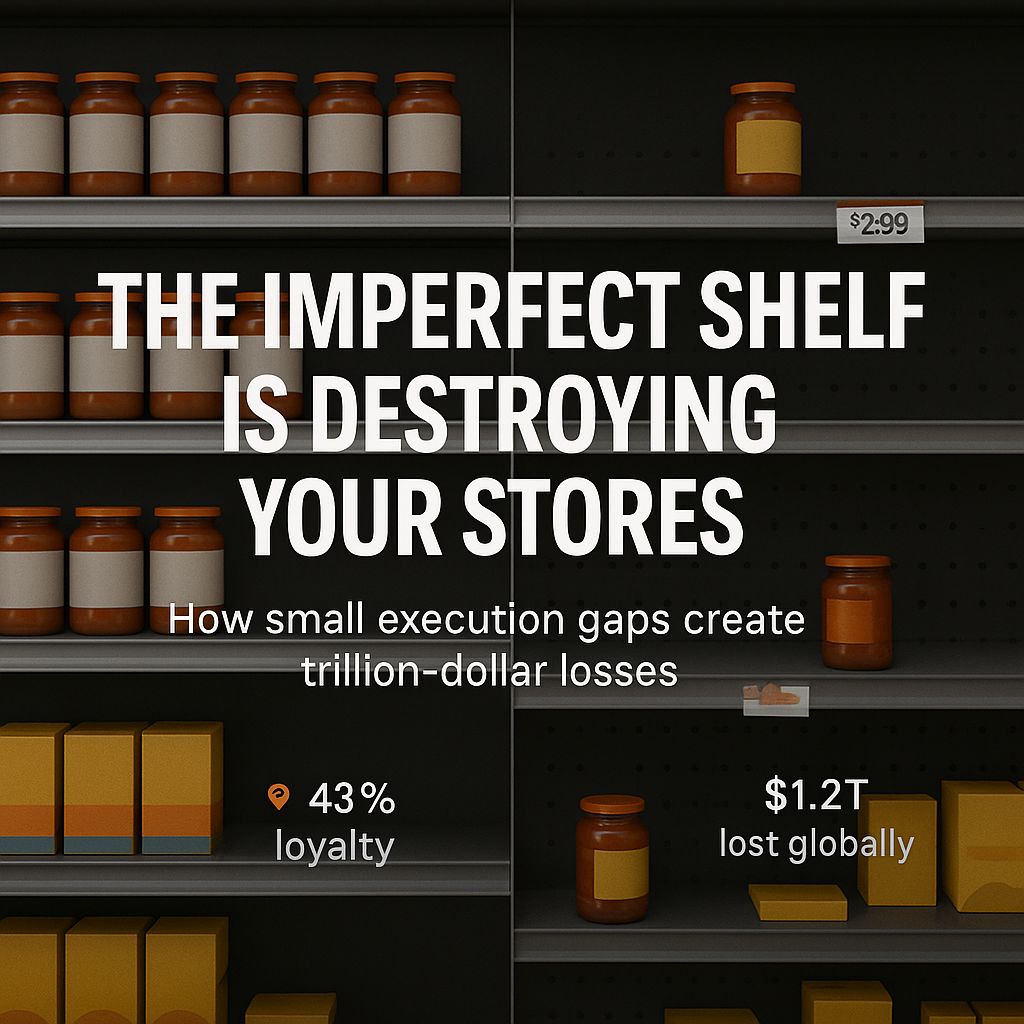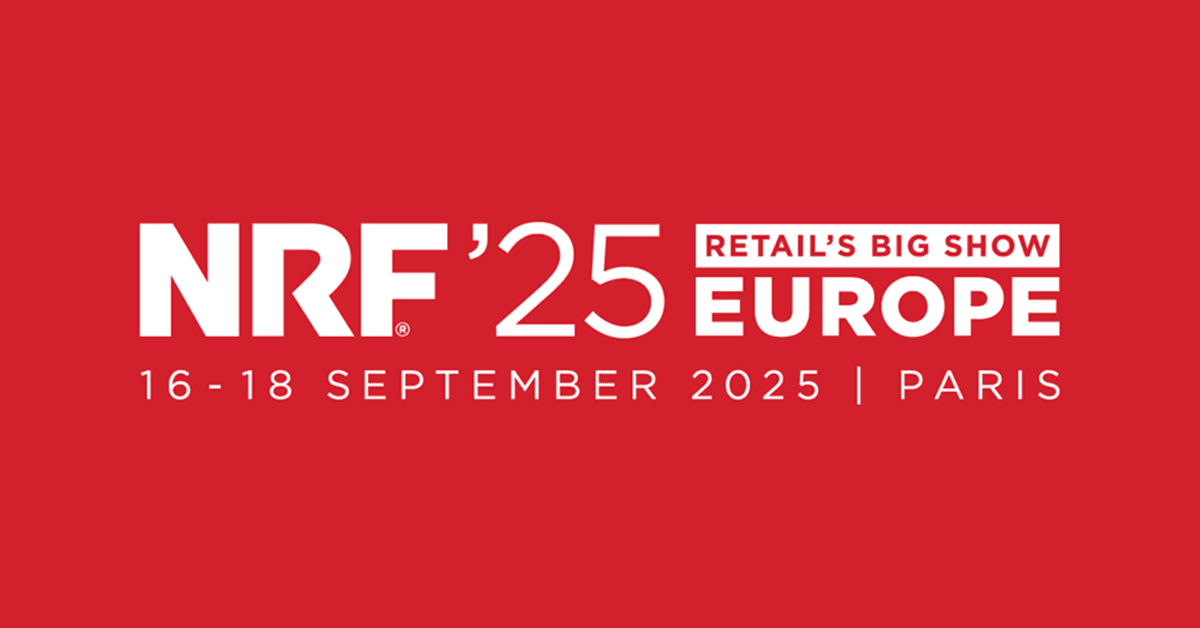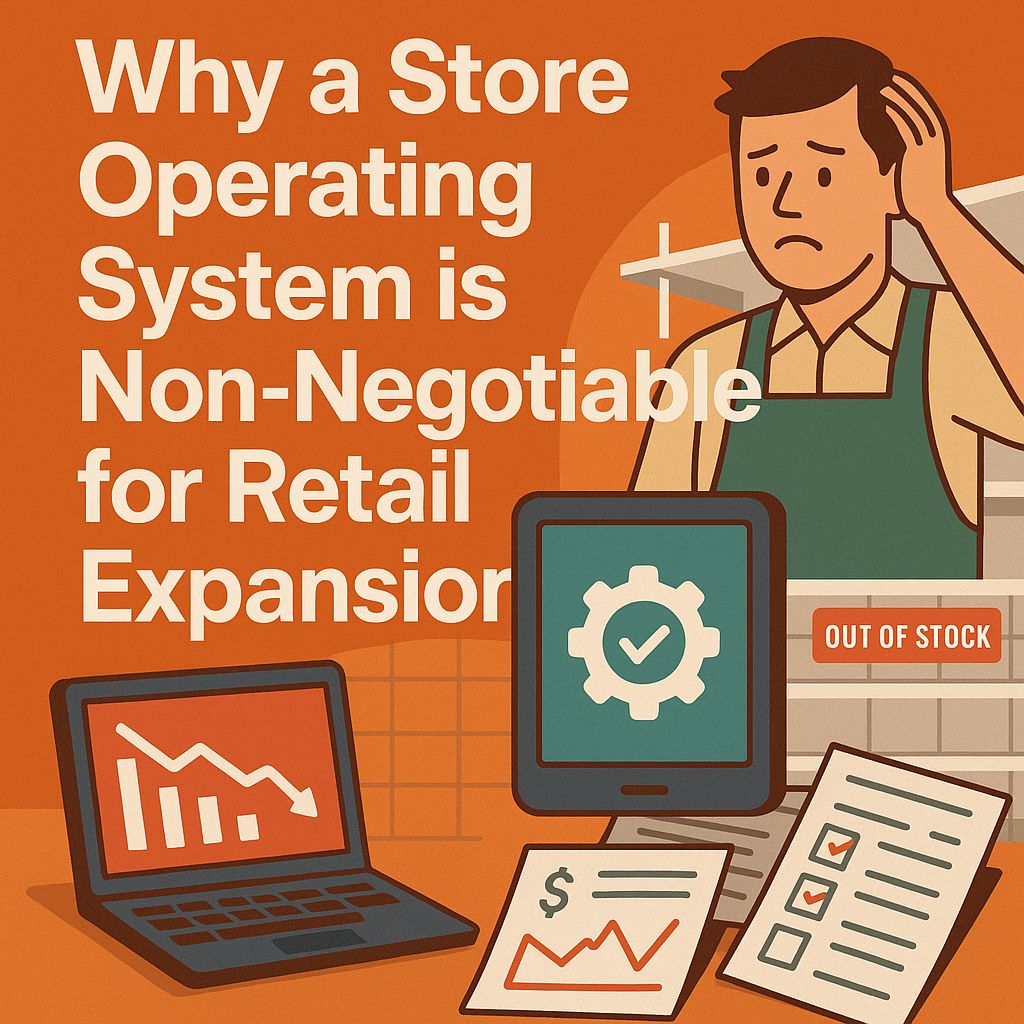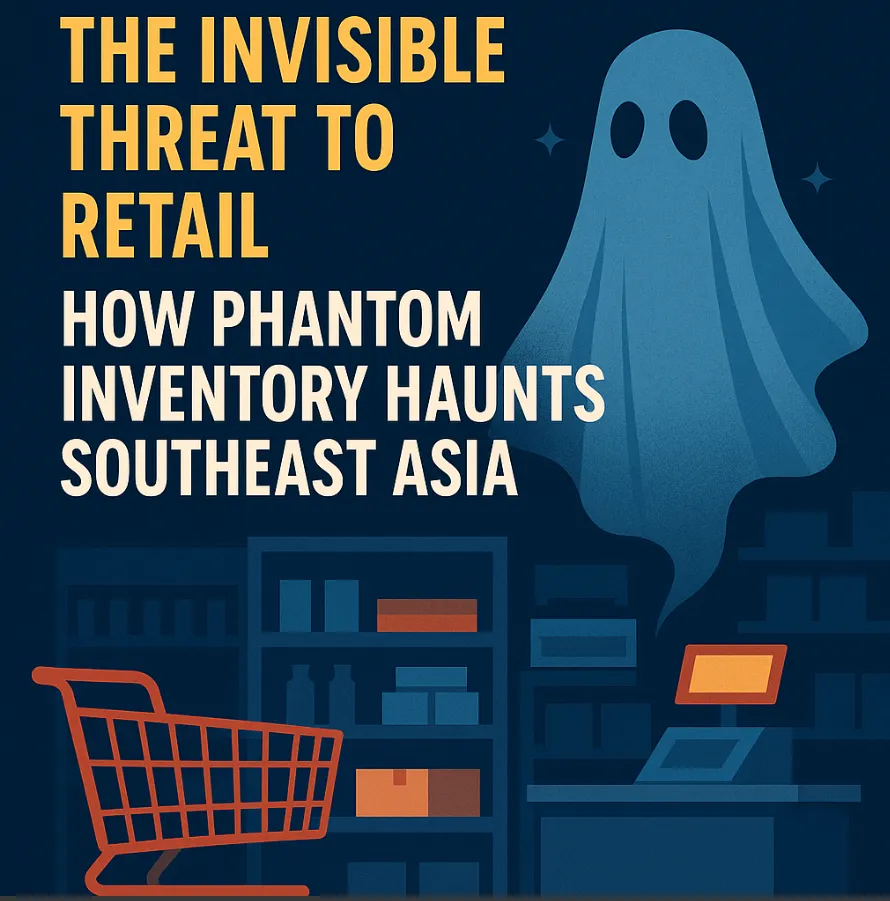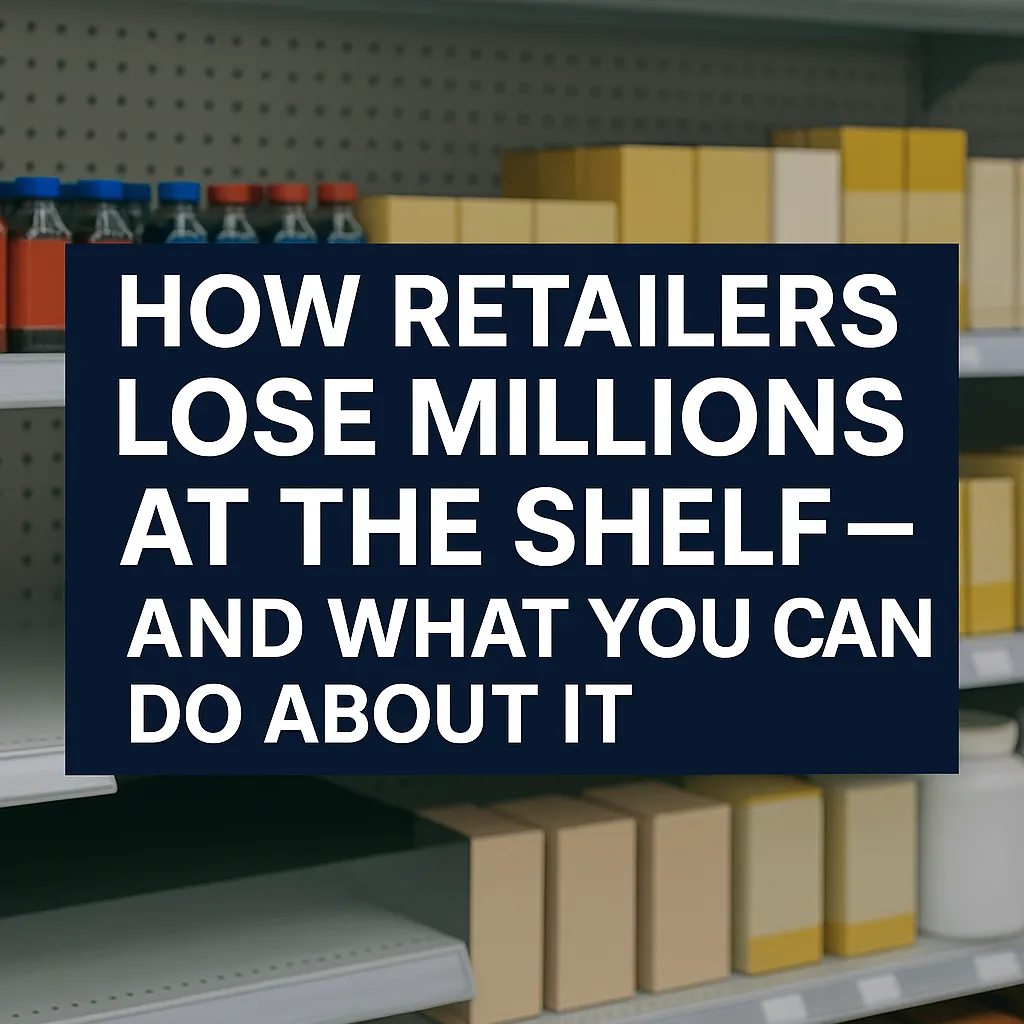Retail
Are Your Shelves Killing Your Sales?
Learn how poor shelf execution silently kills retail sales and how smarter real time solutions can improve revenue, trust and efficiency.
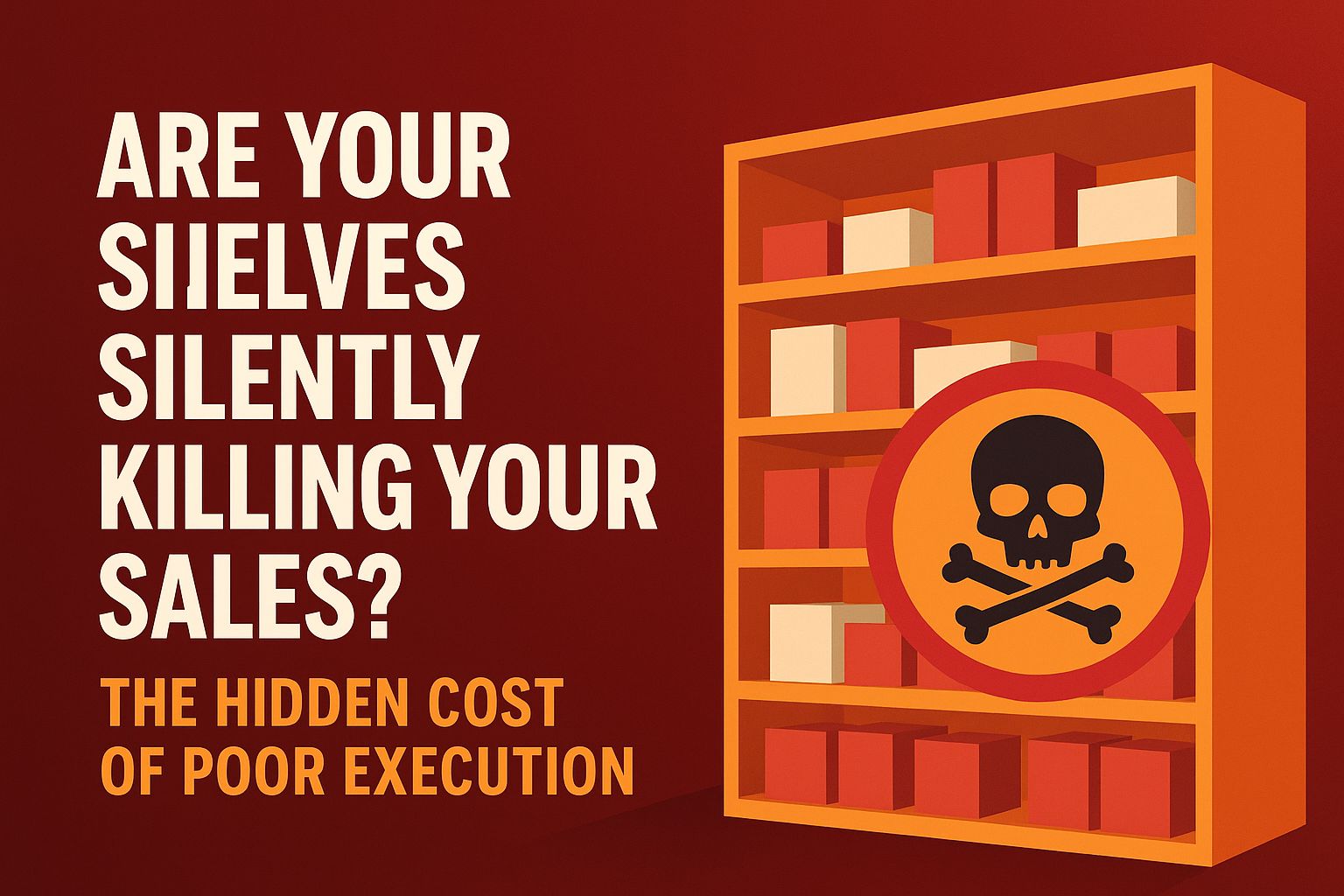
Reading Time
0 Minutes
Table of Contents
Expand
Authored By

Lukasz Piotrowski
CEO & Founder
Walk into any retail store, and what's the first thing that catches your eye? It's not just the products; it's how they're presented. The way shelves are stocked and products are arranged is the final, critical step in your entire business strategy. Yet, in the hustle of daily operations, many retailers are losing a battle they don't even realize they're fighting: the battle for perfect store execution.
It's a silent killer of sales, and it's happening in plain sight. These aren't just merchandising slip-ups; they are symptoms of a deeper operational breakdown that could be costing you more than you think.
The Small-Format Squeeze: Where Every Inch Matters
While these execution failures can plague any retailer, they become critical in the high-pressure environment of small-format stores. Convenience stores, petrol stations, and pharmacies operate on a different set of rules:
- Lean Teams, Massive Responsibility: With minimal staff, each employee wears multiple hats. They are the cashier, the stocker, and the customer service expert all at once. This relentless pressure, which causes significant stress for 79% of store associates,¹ makes it nearly impossible to keep up with manual compliance checks and merchandising standards.
- Limited Space, High Stakes: In a small store, every inch of shelf space is prime real estate. There's no sprawling backroom to hide overstock and no alternate aisle for a customer to browse. An empty shelf or a misplaced product isn't just an inconvenience; it's a gaping hole in your sales floor.
- High-Volume, High-Velocity: Small-format stores thrive on quick, frequent transactions. This high velocity means shelves degrade faster, stockouts happen more quickly, and the negative impact of a poor experience is felt immediately.
The Unseen Cost of Planogram Decay
We've all seen it: a shelf that looks like it was hit by a small tornado. This isn't just clutter; it's a failure to comply with your planogram—the master blueprint designed to maximize sales. When this blueprint isn't followed, a few things happen:
- Compliance Decay: A perfectly set shelf isn't static. Without constant, prioritized correction, it can degrade by as much as 10% every single week, silently killing your sales strategy.²
- Perceived Low Quality: A messy display signals to customers that the products are of lower quality or that the store doesn't care about its inventory, damaging your brand's reputation.
- Decision Paralysis: Poorly presented products overwhelm customers. Instead of making a purchase, they get frustrated and often leave empty-handed.
The High Price of Inconsistent Execution
Consistency is the bedrock of customer trust. But inconsistency goes far beyond a product being in the wrong place. It includes missing price labels, poorly executed promotions, and signage that doesn't serve all your customers.
- Eroding Trust: When a store's layout is unpredictable, or when pricing is inaccurate, it erodes customer trust. In fact, studies show that up to 62% of customers may be lost due to pricing errors alone.³ Every mistake is a small tear in the fabric of customer loyalty.
- Missed Opportunities: A well-executed store has a natural flow that guides customers and encourages impulse buys. Inconsistent execution disrupts this flow, leaving cross-selling and upselling opportunities on the table.
- Creating Silent Barriers: In today's diverse world, failing to execute promotional signage correctly for non-English speakers creates an invisible barrier, alienating a significant portion of your customer base and resulting in lost sales.
The Bottom Line: From Tidying Up to Intelligent Execution
You can't solve a systemic problem with manual effort alone. Constantly tidying up is a losing battle. The root cause of these visible failures isn't a lack of effort from your team; it's a lack of real-time visibility and a system for prioritized action. True merchandising excellence is a result of operational excellence.
Imagine if your team wasn't just reacting to the biggest mess, but was automatically directed to fix the most costly problem first? Effective execution, powered by a smarter operational approach, can:
- Increase Basket Size: By ensuring complementary products are always placed together according to plan, you can reliably drive bigger purchases.
- Enhance Brand Perception: A clean, organized, and consistently executed store reinforces your brand's commitment to quality and professionalism every single day.
- Automate Perfect Execution: It creates a closed loop where issues are instantly identified, prioritized by financial impact, and assigned for correction, ensuring your store remains in a state of readiness to sell.
If your sales numbers aren't where you want them to be, it's time to look at your shelves. Are they a welcoming gateway to a purchase, or a frustrating obstacle course? The answer is the key to unlocking your store's full potential.
Sources
- "Retail Task Management Software Statistics 2025," LLCBuddy, accessed August 25, 2025, https://llcbuddy.com/data/retail-task-management-software-statistics/
- "Why Planogram Compliance Is Crucial To Your Retail Strategy," BeatRoute, accessed August 25, 2025, https://beatroute.io/sales-execution/5-techniques-to-ensure-planogram-compliance/
- "Why Do Your In-Store Labels Matter?," TPP Retail, accessed August 25, 2025, https://www.tppretail.com/why-do-your-in-store-labels-matter/
About the author: Lukasz Piotrowski is the CEO of OmniShelf, a company dedicated to empowering retailers with innovative solutions for optimized shelf execution. With extensive experience in retail technology, he is passionate about helping businesses overcome operational challenges and drive profitability at the point of sale.
INSIGHTS & UPDATES
Explore More from the OmniShelf Blog
Stay ahead of the curve with deeper insights, product updates, and industry trends shaping the future of retail technology. Discover more stories that matter to your business.





